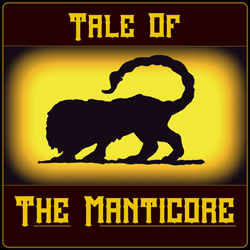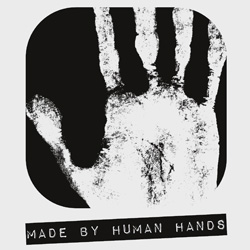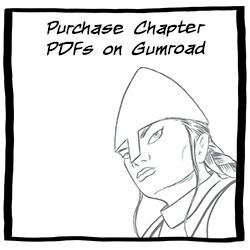How to Fight: Mass Combat
There are two sets of rules for mass combat use. One is BattleSystem as an adaption from the Advanced D&D miniature rules for when the PCs are present and directly dictating a battle. The other is The War Machine rules from the Companion set for when the PCs are not present and I need to determine the result of a battle from afar. The battle system rules were written with AD&D power levels in mind, which is a decent match for BECMI, however, when PCs and their foes start reaching Masters level of power and have Grand Mastery in their trained weapons, the Battlesystem rules doesn’t have much appropriate scaling, so I have adjusted the rules a bit for Battle system to reflect that. The War Machine rules are unchanged from the Companion set. You can read them in that book. At some point I will be adapting them here, but there is a LONG way to go before the PCs are going to be commanding armies, so I have time.
There are SO MANY rules that could go here. The best bet to get all the nuance out of these rules is to go out and pick up the old Battle System rules where I have taken most of these rules from. I will be making these rules more complete as I work on them, and as I’m able to get more games in as I write my comics.
Basing your Minis
Miniatures are intended to be used with these rules. The original BattleSystem rules were meant for 15mm minis, and the BattleSystem Skirmish rules were based on a 25mm scale. Modern minis are nowadays anywhere between 28mm and 30mm. So choosing your base for your minis will have to be adjusted. The main rule is, ‘the smallest base that fits.’ however, the main guidelines are:
- 20mm square bases are intended for small troops and medium sized troops that are trained to fight in formation
- 25mm square bases are intended for untrained medium sized troops and bigger troops.
- 25mm X 50mm rectangular bases are for cavalry.
- 40mm square bases are for large troops.
- PC can be on whatever base they want, typically round.
Each base is meant to represent 10 units per figure. For PCs and exceptional monsters, one figure represents one person.
The Turn Sequence
The turn from my intermediate rules is unchanged and the fundamental rules for Morale hasn’t changed either. Roll a d12 for Initiative. For Mass Combat, I do not allow ties. If tied, roll again.
Morale
The test conditions for when to test for morale remain the same, but instead of morale being for an entire side for the battle, morale checks are rolled per unit. There are a few additional conditions when a check must be made:
- When within 3″ of a routed unit with an equal or better morale score.
- When the unit is 1″ away from a charging enemy unit and it about to be hit.
- When a unit attempts to charge, unless the target is shaken or in a failed morale state.
- When a unit is charging and attempts to cross an obstacle in it’s path.
There are now more detailed conditions on the adjustment to morale when making the morale check:
-2 if at least half of the unit figures have been removed.
-2 if the unit currently is in a failed morale state
-2 if the unit is making a charge of opportunity
-1 if the unit is shaken
+1 for each rank the of the unit
If a unit fails a morale check when attempting to charge, the unit doesn’t do anything. When the unit fails a morale check when crossing an obstacle, the unit stops moving at the obstacle. With the exception of receiving a charge, a unit can back back up 4″ to prevent making a morale check if the unit’s morale is not shaken or failed. A unit with shaken morale can only a make rally check during the movement phase if it is not in contact with an enemy unit.
Movement
There is a lot to cover for troop movement, so I have separated it into it’s own section <to be added later>
Attacks
At this scale, hit points don’t matter. Attack Dice are the thing. You determine the attack dice by calculating THAC0 and the Max Damage / round of the character or unit. You determine the attack dice to be rolled based on the following chart:
| THAC0 –> | Conversion Points | <– Max Damage / Round |
| 20 | 0 | 0-2 |
| 19 | 1 | 3 |
| 18 | 2 | 4 |
| 17 | 3 | 5 |
| 16 | 4 | 6 |
| 15 | 5 | 7-8 |
| 14 | 6 | 9 |
| 13 | 7 | 10 |
| 12 | 8 | 11-12 |
| 11 | 9 | 13-16 |
| 10 | 10 | 17-21 |
| 9 | 11 | 22-28 |
| 8 | 12 | 29-36 |
| 7 | 13 | 37-45 |
| 6 | 14 | 46-54 |
| 5 | 15 | 55-63 |
| 4 | 16 | 64-72 |
| 3 | 17 | 73-80 |
| 2 | 18 | 81-100 |
| 1 or lower | 19 | 101+ |
| Conversion Points | Attack Dice |
| 0-3 | d4 |
| 4-6 | d6 |
| 7-9 | d8 |
| 10-14 | d10 |
| 15-24 | d12 |
| 25-35 | d12+d8 |
| 36+ | 2d12 |
The number of dice you roll when attacking is based on the number of units that are in base contact. Some units are able to strike with multiple rows, for example, when the unit is a regular unit with spears, the second row can also roll to strike. Additionally, when charging additional dice are rolled. Roll all the attack dice at once and add up the number of Hit Scored based on this table:
| Result of the AD Roll | Hits Scored |
| 1-3 | 0 |
| 4-5 | 1 |
| 6-9 | 2 |
| 10-11 | 3 |
| 12-13 | 4 |
| 14+ | 5 |
The number of hits your unit can take is based on it’s Hit Dice or Experience Level.
| Hit Dice | Exp Level | Hits / Figure |
| Less than 1-1 | 1/2 | |
| 1-1 to 1+1 | 0-1 | 1 |
| 1+2 to 3+1 | 2-3 | 2 |
| 3+2 to 6+ | 4-6 | 3 |
| 7 to 10+ | 7-10 | 4 |
| 11 to 18+ | 11-18 | 5 |
| 19 to 25+ | 19-25 | 6 |
| 26 to 35+ | 26-35 | 7 |
| 36 or more | 36 | 8 |
Those numbers may look extreme, but absolutely most of your units involved in mass battles are going to have 1 or 2 hits per figure and only the Companion and Master level characters are going to be able to wade onto the battlefield like Sauron with his mace.
Armor Checks
So now that you know how many hits your unit has to deal with, it’s time to see how many units are to be taken off the battlefield. Each unit has an armor rating. For each hit you roll a d10 against your figure’s armor rating (AR) and if you roll equal to or greater than the unit’s AR, you negate one hit. You determine a units AR with the following table:
| Armor Class | Armor Rating |
| 9 or more | 10 |
| 7 to 8 | 9 |
| 5 to 6 | 8 |
| 3 to 4 | 7 |
| 1 to 2 | 6 |
| -1 to 0 | 5 |
| -3 to -2 | 4 |
| -4 to -5 | 3 |
| -6 or less | 2 |




